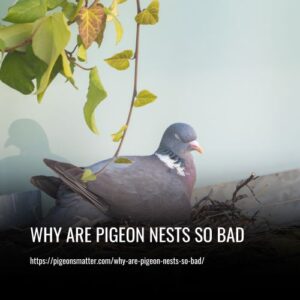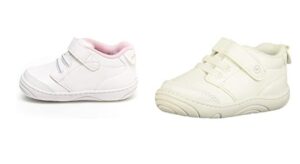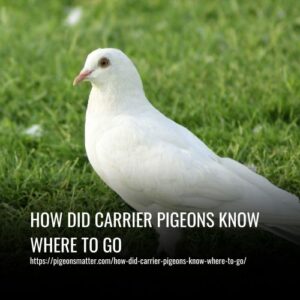It’s a common question among city dwellers who regularly see adult pigeons but never seem to spot any young ones. While it may seem like a mystery, there are several reasons why baby pigeons are rarely seen in public spaces.
Firstly, baby pigeons are often born in hidden nests that are difficult to spot. Pigeons typically build their nests in hard-to-reach areas like rooftops, ledges, and other high places. These nests are usually well-camouflaged, making them difficult to spot from the ground. Additionally, baby pigeons are often born without feathers and are not able to fly until they are several weeks old, so they are not able to leave the nest and venture out into public spaces until they are fully developed.
Secondly, adult pigeons are very protective of their young and will keep them hidden from predators and other potential threats. This means that even if you do manage to spot a pigeon nest, you are unlikely to see any baby pigeons unless the adult pigeon is away from the nest. Adult pigeons may also move their young from one nest to another if they sense that their nest has been discovered, making it even harder to spot baby pigeons in the wild.

Why Do We Never See Baby Pigeons?
The main reason why we never see baby pigeons is that they are born in hidden nests high above the ground.
Birds Tell Us to Act on Climate
The birds around us can teach us a lot about the impact of climate change on our environment. By standing with Audubon and calling on elected officials to listen to science and work towards climate solutions, we can help protect these precious creatures and their habitats.
BirdNote, a daily show on public radio stations nationwide, highlights the unique behaviors of different bird species. For example, while we may see down-covered mallard ducklings and goslings grazing with their parents in waterfront parks, we never see baby pigeons. That’s because pigeons stay in the nest and depend on their parents for a longer period, making it difficult to spot them in the wild.
It’s important to take action on climate change to protect not only these birds but all species and ecosystems that are at risk. By working together and listening to science, we can create a better future for all living things.
Have You Ever Seen A Baby Pigeon?
Have you ever noticed that despite the abundance of pigeons in our cities, you never seem to spot any baby pigeons? It’s a curious observation that may have crossed your mind. While we ponder the mysteries of the natural world, such as the origin of life or the navigation of migrating birds, the absence of baby pigeons remains a puzzling phenomenon that we may not have given much thought to.
Where Are All The Baby Pigeons?
Have you ever noticed that you never seem to see any baby pigeons? It’s a bit strange, isn’t it? Observing wildlife in the park may include sightings of baby ducks and hearing the chirping of baby birds in their nests, however, the whereabouts of baby pigeons remain unknown. Pigeons are everywhere in our cities, gardens, and countryside, but it’s rare to see any young ones. It’s a mystery as to why this is the case.
Babies Everywhere
Have you ever questioned the absence of juvenile pigeons in public areas? The truth is, you probably have, but just didn’t recognize them as juveniles. Pigeons stay in their nests for an extended period, until they are almost the same size as their parents when they finally leave.
After being hidden away for over 40 days, young pigeons no longer resemble pigeon babies, and you may have seen countless young pigeons without even realizing it. So, the next time you see a pigeon, remember that there are babies everywhere!
What do baby pigeons look like?
If you’ve ever wondered what baby pigeons look like, the answer might surprise you. Known by various names such as peeps, pipers, squeakers, squealers, and squabs, baby pigeons are almost bald with dark or pink skin and patchy yellow fuzz that will eventually grow into feathers. Their beaks are long and flat surfaces, fleshy nose wattles are present, and they have no feathers under their wings. Their feet are relatively large in proportion to their bodies and are grey.
Baby pigeons are altricial, which means they are almost completely helpless and rely on their parents for care and food. Pigeon chicks’ eyes stay closed until they’re 5 days old. Unlike other birds, they don’t gape for food. Instead, parents feed them Pigeon Milk, a high-fat, high-protein secretion from their crop lining. After a week, adult food is introduced, and by the end of the second week, chicks eat it alone. During their early stages of development, nestlings have most of their feathers and a short tail, though they may still display yellow fuzz on their head and neck.
Why Don’t We See Baby Pigeons?
Have you ever noticed that you don’t often see baby pigeons? There’s a reason for that – they’re experts at hiding! Pigeons typically choose elevated locations like building ledges or trees for nesting. Their nests consist of sticks and twigs, and feathers are added for insulation to maintain egg warmth.
The eggs themselves are white with brown spots, which allows them to blend in with the nest material and stay hidden from predators. This natural camouflage ensures that the baby pigeons remain safe and hidden until they are old enough to venture out on their own.
FAQs
Baby pigeons are born naked and with little down. The weight of these creatures is approximately 3 ounces, which is 1/10th of an adult pigeon’s weight. Their skin is pink and wrinkled, and their eyes are closed. Within a few days, they begin to grow pin feathers.
As they grow, they develop more feathers until they look like miniature versions of their parent Pigeons. At six weeks old, they have all their adult feathers and are ready to leave the nest. After another six weeks, they are fully grown and ready to start their own families.
The term “squab” is used to refer to baby pigeons that are too young to fly and are typically four weeks old or younger.
Baby pigeons rely on their parents until they are mature enough to fly away. The parents gather a variety of food, such as seeds, fruits, and waste, to feed their offspring.
Pigeon eggs have brown spots, but their appearance varies by breed. Racing pigeons’ eggs are white, while homing pigeons’ eggs have brown patches. Pigeon egg size also varies by breed, with homing pigeons laying bigger eggs. The incubation period for pigeon eggs is consistent at around 18 days, regardless of the breed.
The recommended action for a found baby pigeon is to leave it in the same location. The parents are likely nearby and will care for it. If you pick it up, the parents may not find it and it could starve. Baby pigeons are fragile and can be hurt if handled roughly. If the parents are not around or the baby seems hurt, take it to a wildlife rehabilitation center. Experts there can give it the best chance of survival.
Conclusion:
The reason why we don’t see baby pigeons is that they spend most of their time in the nest until they are fully grown. This is a natural process that allows them to develop and become independent before venturing out into the world.
While it may be rare to see baby pigeons in the wild, they are an important part of our ecosystem and play a vital role in keeping our cities clean. So next time you see a pigeon, remember that there’s a good chance it was once a cute baby bird.


